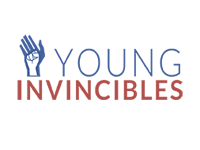Opportunity Indicator Series: Unemployment
•Employment is one of the most powerful contributing factors to economic opportunity. It is essential to well-being, self-worth,and economic survival. More than any other issue, Democrats and Republicans talk about helping more Americans get jobs as their number one priority. It should be no surprise, then, that employment is one of the 16 indicators in the Opportunity Index.
While unemployment in America remains high –currently 7.6% – the Opportunity Index allows us to examine unemployment across counties, states and regions. Trends and patterns in unemployment quickly emerge. One trick I like is to click on the “Economy Score” bar at the bottom of the Opportunity Index. It turns the entire map different shades of green, with only economic data visible. Now, we can look at the vast disparities between unemployment and other economic factors across the country.
Unemployment ranges from a low of 3.2% in North Dakota to a whopping 11.5% in bottom-ranked Nevada. Interestingly enough, Nevada is also the lowest-ranked state overall in the Opportunity Index.
But unemployment doesn’t just vary across different states – it also varies vastly for different groups of Americans, according to an April 2013 report. Young Americans, especially, are feeling the brunt of unemployment. Workers under 25 years of age face a jobs deficit of over for million jobs. By 2022, young workers will face unemployment rates double the national average. The prospects are even dimmer for youth of color. Young African-American and Hispanic workers face approximately double the unemployment and underemployment of young white workers. Those without a college diploma are twice as likely to be unemployed. Overall, 15.1% of youth 18-24 are unemployed.
The picture gets grimmer when you dip below the unemployment rate itself. In 2012, the labor force participation rate of Americans 18-24 declined to its lowest point in four decades: only 64.7%. This means that millions of young people have given up on searching for jobs entirely, stripping the American economy of productivity. Young people tend to work in low-paying hourly jobs in retail, hospitality and health-care services, often with unpredictable hours. This makes it difficult for these individuals to move beyond low-wage employment by taking college courses as they work.
But it’s dangerous to take these statistics as immutable fact. Our reaction shouldn’t be to throw up our hands and do nothing. There are many dedicated organizations devoted to solving this crisis, and there are policy choices we can make.
Opportunity Nation coalition partner Year Up’s mission is to close the Opportunity Divide by providing urban young adults with skills, experience and support. They call their model “high support, high expectation,” combining job skills training, internships, and education stipends. Individuals apply for the one-year intensive training program, spending the first six months developing skills in the classroom and the second six months at internships with corporate and public sector partners. Eighty-four percent of graduates are employed or attending college full-time within four months of completing the program.
As fantastic as the work of Year Up and similar organizations may be, further government action is needed to fix our youth unemployment crisis. Opportunity Nation is happy to support the CAREER Act, introduced in the Senate by the bipartisan duo of Michael Bennet (D-Colorado) and Rob Portman (R-Ohio). The Bennet-Portman CAREER Act supports initiatives that will help reduce youth unemployment by:
• Providing flexibility to job training providers to improve outcomes for youth;
• Aligning job training with regional and State workforce needs;
• Holding providers accountable for results;
• And maximizing taxpayer dollars.
The CAREER Act would reorganize the current mess of federal job training programs, producing more effective results. Call, email, or Tweet your Senator and let them know you support the CAREER Act as a step toward ensuring the next generation has access to and training for good jobs.
About this week’s indicator:
Opportunity Index Dimension: Jobs and the Local Economy
Indicator: Jobs (Uneployment Rate (%))
Source: Bureau of Labor Statistics, Local Area Unemployment Statistics
Rationale for inclusion: Retaining a steady job is crucial to the social and economic well-being of the vast majority of Americans, who rely upon wages to maintain their quality of life. A high unemployment rate means that job opportunities are scarce; at the community level, high unemployment rates also mean that there are fewer informal employment networks local people can tap to find a job.








